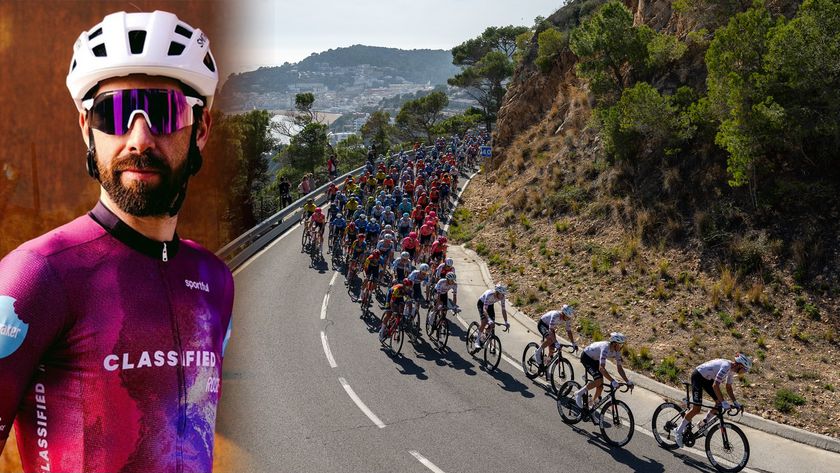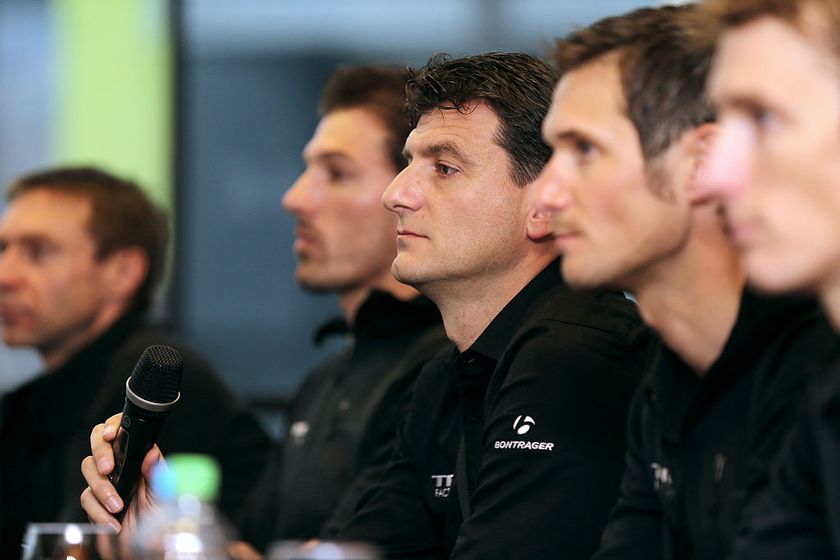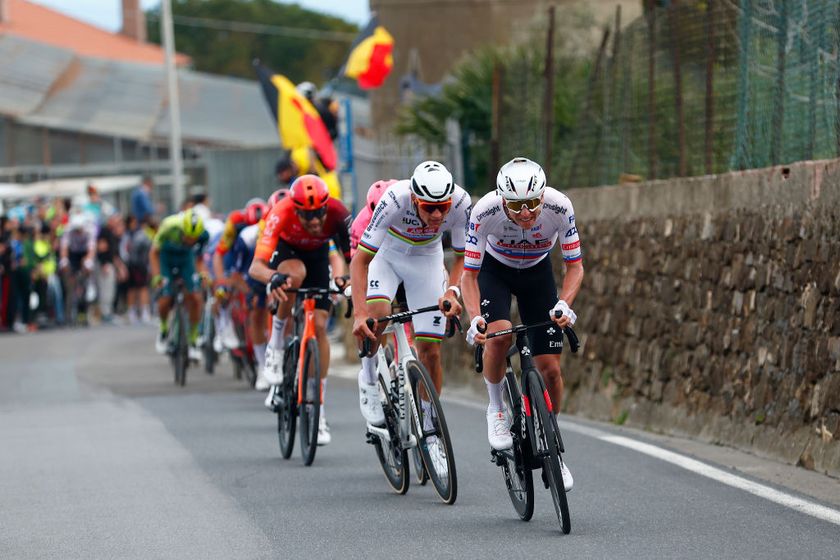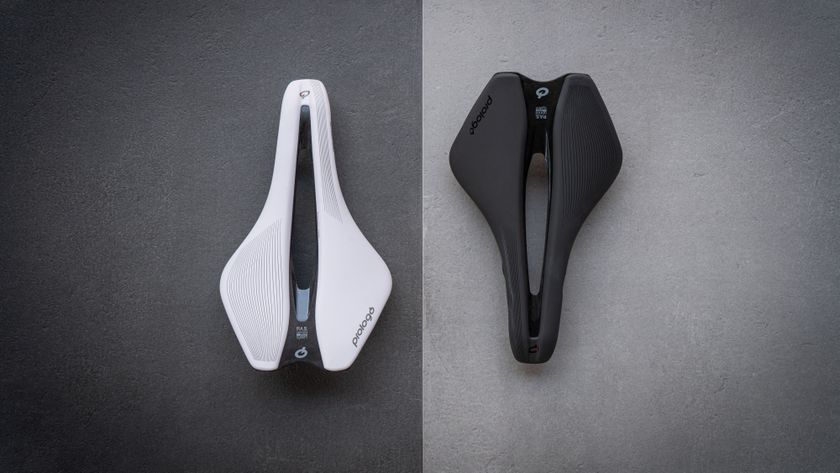Disc brakes in the peloton
The risks and benefits of disc brakes in professional cycling







This week the UCI announced the continued testing of disc brakes in professional cycling for 2016, with men and women allowed to use the new braking technology on the road from January 1. If this wider phase of testing is a success, disc brakes will officially become legal across the sport from 2017.
UCI approves widespread disc brakes use in 2016 professional peloton
Nibali in favour of disc brakes in pro peloton but worried about crashes
Trek Factory Racing decline to use disc brakes at Tour Down Under
CPA believes testing disc brakes in peloton could cause crashes
Dowsett fears disc brakes will cause serious injury
News shorts: Tony Gallopin outlines early season racing schedule
Q & A: UCI Technical Manager Mark Barfield on road disc brakes and the weight limit
The UCI claimed that all of the sport’s "stakeholders, riders, mechanics, organisers, neutral service providers, teams and the bicycle industry, represented by the World Federation of the Sporting Goods Industry (WFSGI), have decided to continue the trial of disc brakes in professional road racing in 2016.”
While industry hails the expansion of the equipment allowed in professional road cycling, some of the affected riders - Vincenzo Nibali, Alex Dowsett, Fabian Cancellara and others - have raised concerns about the transition to disc brakes and what that will mean for the dynamics of the peloton. Cyclingnews examines the issue in depth.
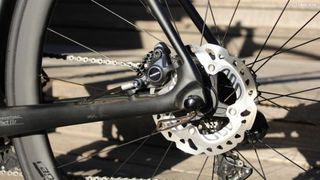
Disc brakes in the peloton – what does it mean
The de facto approval of disc brakes will create and allow a mixed professional peloton, with some riders using disc brakes and others on traditional caliper brakes. There have been concerns that this could cause crashes due to the two different braking techniques and braking times. However bike and component manufacturers believe a mixed peloton is a not a serious problem and point out that equipment differences already exist. Many brands are pushing for widespread disc brake use as soon as possible. Shimano and SRAM already have disc brakes on the market, while Campagnolo are expected to unveil their system in the coming months.
Professional cycling teams are unlikely to have bikes equipped with disc brakes ready for the early races of the 2016 season but disc brakes are expected to invade the peloton in time for the spring Classics. Trek Factory Racing and a number of other WorldTour team have already ruled out using disc brakes at the first WorldTour race of the season, the Tour Down Under in January.
It remains to be seen if the Grand Tour riders will want to use them in the summer. Problems of extra weight, aerodynamics, neutral service and wheel changes have yet to fully considered by the peloton in an intense race scenario. As a result bike manufacturers are ready to study the problems with the riders as disc brakes are used in the professional peloton.
Get The Leadout Newsletter
The latest race content, interviews, features, reviews and expert buying guides, direct to your inbox!
“Specialized is in favour of the introduction of disc brakes, we believe they are the technology of the future. However, it will be important to understand if all Specialized riders want to use them,” Simone Toccafondi - the head of Specialized Racing, which supplies frames, equipment and performance information with the Etixx-QuickStep, Astana and Tinkoff teams - told Cyclingnews.
“There are lots of factors involved in a decision to use disc brakes, and we think it is best to study their introduction and use with the teams. We’re scientific in how we work and so will study when to take advantage of the disc brakes in the professional peloton.”
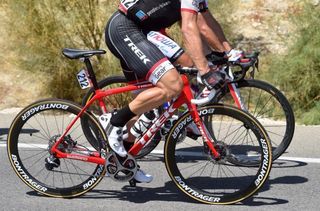
The technology behind disc brakes
Hydraulic disc brakes have been used in mountain biking for over two decades and more recently in cyclo-cross races, providing better braking on the trails and in wet conditions.
Conventional brakes simply clamp a set of rubber pads on to the rim sidewalls, and in most cases, the caliper is connected to the lever with a braided steel cable. Hydraulic systems, on the other hand, use a smaller caliper mounted near the hub that clamps on to a dedicated rotor (which is usually made of stainless steel). The comparatively squishy cable and housing is replaced by noncompressible hydraulic fluid and a pair of cylinders, which both improves power transfer between the lever and caliper and is fully sealed from weather.
In contrast to traditional road racing bikes, most disc-equipped mountain bikes also use thru-axle wheel attachment systems with closed dropouts instead of quick-release skewers clamping on open dropouts for better system rigidity and more consistent wheel placement.
These changes require a redesign of the frames and wheels, which must respect new UCI equipment rules. Bigger discs give better braking but road discs are expected to be 160mm diameter.
The advantages of disc brakes for professional riders
Several teams and riders tested disc brakes in the second half of 2015, with the new system widely considered an improvement on caliper brakes, especially in the wet.
Hydraulic disc brakes produce more braking power and generally are more consistent in foul weather than rim brakes, particularly on carbon wheels. Ultimate braking force is still tied to tire traction however, and discs won’t change that. However, hydraulic discs are more controllable than rim brakes, allowing riders to more precisely tune their braking force for maximum deceleration without locking up the wheel.
This can perhaps give an advantage on descents and on wet roads and cobbles and when fighting for position in the peloton. Riders often crash when someone goes down in front of them. Better braking thanks to disc brakes could help avoid some of these pile-ups.
But Dowsett challenged the notion that a lack braking power causes crashes.
“I’ve never been short of braking power on a road bike,” Dowsett said to Cyclingnews. "My belief is that on a road bike you lose traction between tyre and road before you lose braking power, so the wheels will lock up before you think you physically need to pull the brakes any harder.
"There’s a video from the Tour – stage 5 I think – in the wet, everyone’s grabbing the brakes and people are going down. They’re not hitting people – they’re grabbing brakes and the front wheels are locking up and they’re coming down before they’ve actually hit anyone. What you can see from that is that, certainly in the wet, you’re not short of braking power – if anything you’ve got a bit too much. In the dry, I don’t feel like I’ve ever been short.
"We’ve got brakes that work well now – do we need to go that extra step, with the risk of perhaps casuing some serious injury?"
Cancellara eschewed disc brakes for his final season of racing, mainly because he prefers not to make any changes. "I don't see it as a change that will help me go faster or make me go slower," Cancellara said.
"We're not expecting to use them in the Classics. It's a technical and a personal decision. I'm the only rider who still uses manual (mechanical) Shimano gears. That's my choice."
He hopes that teams and manufacturers will give riders a choice over which system to use and not force anyone to change. "We're the ones out there racing, not the directeur sportif, not the suppliers, the engineers or the UCI. The riders are concerned about the safety aspects, about being cut or burnt by a disc. That's what matters and so I believe people will listen to the riders."
- See also: Nibali in favour of disc brakes in pro peloton but worried about crashes
- Dowsett fears disc brakes will cause serious injury
- Cancellara chooses not to use disc brakes in 2016
The disadvantages of disc brakes and concerns over safety
Some riders are doubtful about the benefits of disc brakes because of a series of potential disadvantages.
Safety is the biggest issue amongst riders. Different braking times in a tightly packed peloton could cause chaos, as riders slow at different times and different speeds before a corner, sparking crashes. Burn injuries from contact with hot discs in crashes are also a worry. Disc can get very hot after lots of braking and Vincenzo Nibali suggested to Cyclingnews that some kind of disc guard is needed to stop riders being burnt in crashes.
Nibali also warned about different braking styles within a peloton and of riders locking up due to the power of disc brakes.
“Riders also have different braking styles. Some brake hard at the beginning, while other go hard later on. The risk with good brakes is that they can lock up up; there's no ABS on bikes. So when you lock up, you skid and can crash. If the road surface is smooth, disc brakes could lock up more. So tyre compounds will be important," he told Cyclingnews.
"Riders will need to learn how to use disc brakes properly and learn how to modulate their braking. It's all about getting used to it."
Wheel changes during races will be slower due to the more difficult set-up of disc brakes. Mountain bikes use through axles for better wheel rigidity but this slows any wheel change. Neutral service in professional races will have to carry wheels for both disc brakes and normal brakes, creating further headaches and possible problems. Imagine if a rider lost a major WorldTour race due to a slow wheel change problem.
Team will face similar problems, although they’re likely to accept them due to being sponsored by the brands looking to promote disc brakes to the public.
If a team has some riders on disc brakes and others on traditional brakes, they will need both kinds of wheels on the team car and in the mechanics truck. The arrival of disc brakes will mean longer hours for team mechanics at races.
All the disadvantages have lead to the CPA rider's association calling for more testing in non-competitive events before disc brakes and introduced in a mandatory fashion, to avoid the risk of a pelotun ising both disc brakes and traditional brakes.
"We are not opposed to the technological innovation, but not at the expense of the safety of the riders,” Bugno said in a statement sent to Cyclingnews.
“The technology must go ahead but must be developed in non-competitive races. Once it is established that the new system is more secure than the previous it must be entered in competitions and mandatory for all the riders.”
Conclusions
Disc brakes in the peloton are coming in 2016. Riders might be hesitant and worried about safety but the industry seems determined to push through the introduction of disc brakes to in turn push the market and bike technology forward.
Teams and the riders depend on sponsorship from their bike and component suppliers and so will no doubt bite the bullet and not complain, at least not in public. The riders may also be convinced of the advantages when they try them in a wet race and when the majority of the peloton are on disc brakes.
Short term doubts remain about a final standard disc brake format, the need to protect hot discs and the problems of slower wheel changes but these are all problems that can be resolved and reduced over time.
The early part of the 2016 season will be a moment of transition and experiment as riders and teams move across to disc brakes. There could be polemics, problems and even more crashes but it seems that disc brakes will soon be ubiquitous in the professional peloton like carbon fibre frames, lycra clothing and aero wheels.
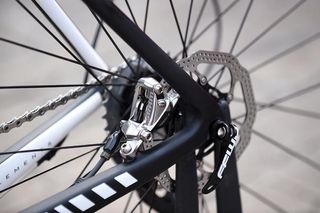

Stephen is one of the most experienced member of the Cyclingnews team, having reported on professional cycling since 1994. He has been Head of News at Cyclingnews since 2022, before which he held the position of European editor since 2012 and previously worked for Reuters, Shift Active Media, and CyclingWeekly, among other publications.

